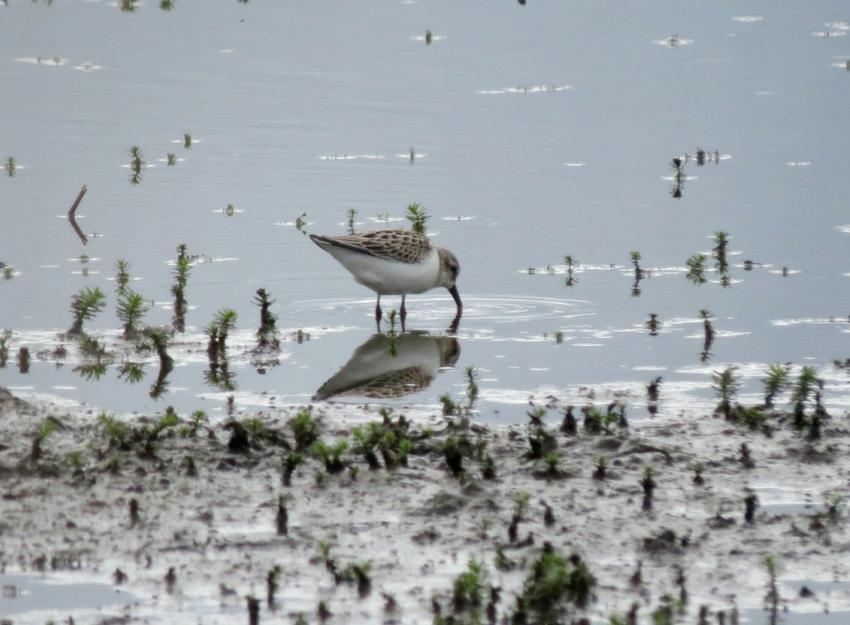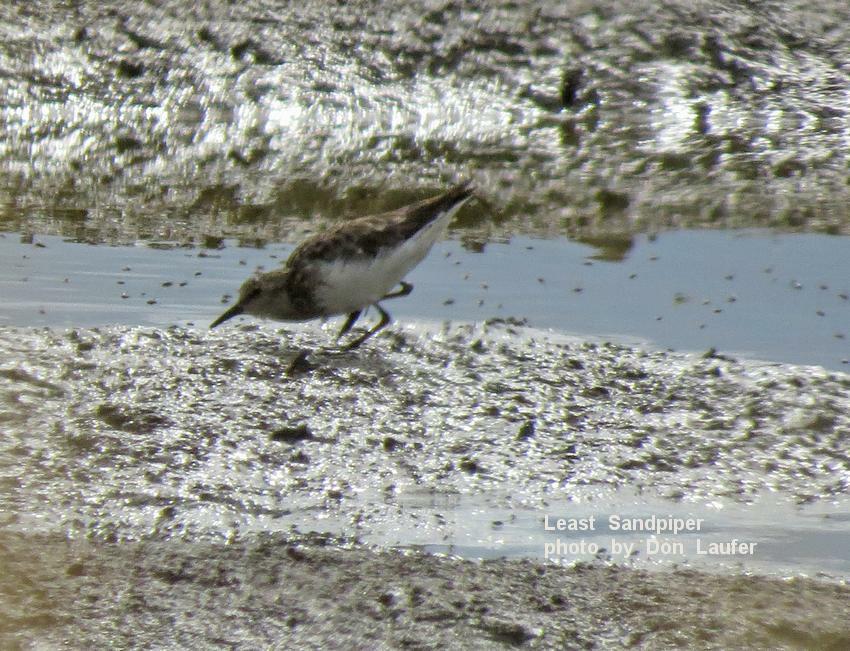Priscilla's
Bird Photography
Photos from personal trips AND trips with
Birds of Oregon and General Science, (BOGS)
in association with Eugene's Celeste Campbell Center
provided by:
Priscilla Sokolowski
Eugene, OR



BOGS Fern Ridge Royal,
August 14, 2014
When I arrived at the Campbell Center, only about four people were there waiting to go birding. But as usual when we bird at Fern Ridge, many folks who live in west or southwest Eugene drive straight out there, so when we got there, we were met with more than another half-dozen birders. I may not be remembering everyone now - nearly two weeks later, but here's a list.
- Priscilla
- Don
- Floyd
- Donna
- Pat
- Marylee
- Larue
- Jo
- Betsy
- Jackie
- Christy
- Bill
I have to give credit to Marylee for coming down from Oakridge so many times this Summer to go birding with us! While I am at it, I should mention that we have had a core group of about eight people who have come to nearly every bird walk this Summer. Most have missed one trip, or two, and most of the core group have missed no more than two trips, but Don hasn't missed any. Only a few of this group have missed three trips. The "core" group are: Don, Jo, Christy, Bill, Marylee, (Me), Pat and Barbara. In addition, Floyd, Larue and Betsy have come along on many of the bird walks. Here is the list for this Fern Ridge trip, as well as I can remember it.
All of the photographs in this trip report and in the photo album for this trip, were taken by Don Laufer. I did not take the time to annotate each of them with his name. While the photos are not annotated with the names of the birds, I do have captions on the slide show which can be seen above the photos. I've made an attempt to correctly identify the birds but am only a beginner with shorebirds and may well have made several errors, especially with Western and Least Sandpipers. While we were at Fern Ridge, I think it was Donna that told me Floyd had identified a Lesser Yellowlegs. There may be one in the photo album/slideshow, but if so, I was not able to separate it from a Greater Yellowlegs.
The sky was partly cloudy and refreshingly cool when we started out. The absence of direct bright sunlight made it easier to see colors and details of birds, although the light level was a little bit lower than desirable for shutter speeds as short as might be needed to catch the action of birds in motion. By the last half-hour of our walk, around 11:30 or so, the Sun was fully out and the temperature had climbed into the high 70s or low 80s.
This was quite a successful trip. We ended up with 34 species, which is pretty good for a BOGS birding trip. (The list is towards the end of this report). Again on this trip we spent time looking at all the birds we could find in the "burn" area; which is right at the beginning of the trail, on the south side, as one leaves the parking lot. We saw some Song Sparrows and several Savannah Sparrows. At the time we were viewing them, I just about convinced myself that at least one of the birds was some other kind of Sparrow, for example a juvenile Grasshopper Sparrow or a Vesper Sparrow, both of which have some streaking on the upper breast like the Savannah. Even when I looked at Don's photos at home on my computer I tried to convince myself that one of the birds was a Vesper Sparrow. I checked with Floyd and he said that unless we flush the bird to see if it really has white outer tail feathers, we can't be sure of this bird. Take a look at my efforts to find Vesper Sparrow field marks on the bird pictured below.


I'm pretty sure the next photo depicts a Savannah Sparrow, but in the field I had my doubts about this one too. I've never noticed such an obvious white throat on this species before, nor even the white crown stripe, though it turns out both are shown in the field guides. I guess it's going to take a lot more effort and time before I will be able to see what I need to be able to see to tell these sparrows apart! The Savannah has pink legs and pink bill and often has a faint yellow streak behind the eye (lores). They also have some obvious but fine streaking on the upper breast and along the flanks. Also a white thin stripe along the center of the crown.


We enjoyed MUCH better views of shorebirds this time, compared to two weeks ago. The pond we had been viewing two weeks ago had dried up and had almost no birds, but the ponds south of the platform and EAST of the dike were in very good shape for shorebirds. We spent most of our time in a 1/4 or less stretch in that area. The birds were mostly around 50 to 100 feet away from us, with a few being up to maybe 150 feet away from us. The sky was partly cloudy, which actually made for better viewing of bird coloration and detail. Even with binoculars, we were able to see the difference between Lesser and Western Sandpipers (in some cases). I'm not claiming I can tell them apart in every instance but I was able to do it with some of the birds out there this time.
There were quite a few Black-Necked Stilts around. When we first began walking south from the platform, one or more of the Stilts began making a raucous note repeatedly. Two of the birds flew around in a large circle calling all the while. People have reported (on OBOL) seeing juvenile Black-Necked Stilts at Fern Ridge recently - the fledgelings of two familes. To me, it looks like one or two of the birds in the three pictures below might possibly be juveniles. One of them has some small speckles or spots on it's wing. When we were leaving that area, Donna saw a Stilt sitting on a clump of grass. It appeared to be sitting on a nest very close to the dike. Perhaps this was why the Stilts made such a ruckus when we first approached that area.






We were spread out over a hundred feet or so along the dike, with three or four spotting scopes, and everyone had plenty of birds to look at and identify. We spent a good long time enjoying all the shorebirds up close. The Black-Necked Stilt would fly up around us once in a while. So did the Greater Yellowlegs, which also did a lot of calling. I especially love hearing the loud melodic 3-note "TEW tew tew" of this bird, with the first of the three syllables being most emphasized and highest in pitch, the others dropping slightly.


I think it was Donna that told me Floyd had seen and ID'd a Lesser Yellowlegs, along with the several Greater Yellowlegs we were all seeing.
If so, I am unable to recognize one in any of the photos Don took on the trip.
Floyd helped us to look for the buffy "wash" across the upper breasts of the sandpipers to identify the Least Sandpipers.
The adult Western Sandpipers have a cleaner, mostly plain white upper breast.
Western and Least Sandpipers are a challenge to distinquish even when seen up close, so I sent these pictures to Floyd to get his help.
Floyd said the bird in the photo below is a Western Sandpiper. To me, it appears to have very fresh and bright feathers, suggesting that it might be a young bird
which has just come into its first adult set of feathers.


Floyd says the next photo is another Western Sandpiper. I had mistakenly thought the buffy wash across the neck made it a "Least".


Don snapped this next photo as we were walking back north and almost back to the platform. We weren't paying as much attention to the shorebirds at the time, being on our way to Royal, where we planned to walk west all the way to the end. The two birds in this next photo look extremely young with very "crisp" feathers. They look so different than other birds we saw that day that I thought they might be something more exotic, such as Semi-Palmated Sandpipers, which have black legs. Floyd says these are more Western Sandpipers, noticing especially "the relatively long, thick bill."


We did get a few photos of Least Sandpipers as well:




At one point we even had a Black Tern fly very low and close to us. It was not in breeding plumage, so it looked much like a B-N-Stilt. It might have been a newly fledged bird, or perhaps an adult in basic plumage. We were unable to get a picture of this bird as it took us by surprise and then was quickly gone.
Long-Billed Dowitchers always seem to be found in groups. Many of them seem to have some of the reddish color of their breeding plumage on their breasts at this time of year, although much fainter than when they migrate through here in Spring on their way north.


In the bushes lining the edges of the dike, there were young Marsh Wrens flitting about. Don got this nice photo of one, showing some downy feathers on top of its head. This bird is molting and has not yet grown the feathers which will make the characteristic pattern on the wings (when perched).


After birding the dike south of the platform we went out to the far west end of Royal to see what we could find there. See the photo album (link further down) to see what else we found that day.


I'll end this report with a shot of one of the many American White Pelicans which we saw throughout the morning, gracefully gliding through the blue skies.


Here are the birds I was able to remember from the Fern Ridge (Royal)
Latitude, Longitude (gps coords): 44.07053, -123.26005
34 species seen or heard at Fern Ridge Royal on 8/14/14
- Canada Goose
- Mallard
- Cinnamon Teal
- Hooded Merganser Female
- Ring-necked Pheasant
- Pied-billed Grebe
- Western Grebe
- American White Pelican
- American Bittern
- Great Blue Heron
- Osprey
- Bald Eagle
- Northern Harrier
- Peregrine Falcon Immature
- Virginia Rail
- Semipalmated Plover
- Killdeer
- Black-necked Stilt
- Greater Yellowlegs
- Western Sandpiper
- Least Sandpiper
- Long-billed Dowitcher
- Black Tern
- Belted Kingfisher
- Western Wood-Pewee
- American Crow
- Northern Rough-winged Swallow
- Purple Martin
- Tree Swallow
- Pacific Wren
- MacGillivray's Warbler
- Common Yellowthroat
- Savannah Sparrow
- Song Sparrow
There are MANY MANY more very fine photos, (especially of the shorebirds), in the album for this trip.
Paste this URL into your browser if clicking on the link does not work:
http://priscillanhk.com/bogs_summerwalk_9_fern_ridge_royal_8_14_2014.html
Enjoy!
Priscilla